In his original kettlebell book, Pavel Tsatsouline talks about a Program Maximum and a Program Minimum. For the younger people in the crowd (read: newer to kettlebells) some explanations may be needed.
The (R)evolution of the Program Minimum
The Program Minimum has it roots with the Russian communist coup. Here is a little background:
“The 1903 congress also adopted the party program, consisting of two parts: minimum and maximum. The two parts of the program corresponded to the two revolutions that Russian Marxists were to prepare for. The minimum program set the task of achieving a bourgeois-democratic revolution, in which the workers would aid the bourgeoisie to overthrow tsarism and establish a democratic republic. The maximum program planned for a proletarian-socialist revolution in which the workers would seize power from capitalists and establish the dictatorship of the proletaria.” (courtesy of allrussias.com)
In the context of the home budget, the program maximum would include everything from food, housing, transportation, education, retirement, etc. The home budget program minimum would include only the minimum things needed for survival.
1. Water – Food
2. Shelter
Pavel took this minimalist concept and applied it to kettlebell training. While it would be ideal to have a more complex/comprehensive training program, many people do not have the means in both time and expertise to stick to that kind of training protocol. A Program Minimum with 100% compliance is much more effective, producing greater results than a complicated, time-consuming program with only 50% compliance.
The big question was: What drills would provide the biggest bang for your training buck?
Answer: 1 Grind and 1 Ballistic—Sculpted to Perfection
The original Program Minimum grind was the bent press and the ballistic was the snatch.
Many of us who started at the beginning of the kettlebell revolution grew up on a steady diet of this plan. However, it did not take long to realize that while these are great selections, for the average beginning kettlbell practicioner, these moves may be a little out of reach.
The bent press and the snatch demand a level of shoulder mobility that not many beginners have access to. Never one to rest on his laurels, Pavel reinvented the Program Minimum with two equally-effective drills: the swing and the get-up. With some instruction, most trainees can access the new plan without the prerequisites of the originals.
In Pavel’s words:
“The Bent Press is an exceptional lift for an advanced minimalist—but most people simply do not have the patience to build up to it. The get-up, while missing out on some of the bent press’s benefits, delivers a number of additional benefits. And, unlike the bent press, trainees of any level can benefit from it.”
Simple & Sinister was born.
The following is a plan to combine both Program Minimums into your class structure and a way to ensure that even beginners can patiently develop the correct technique. This PM2 is scalable and can be taught in a group setting, even if the skills of the group members are widely varied.
What I am about to give you is a “one-stop-shop” template that will be appropriate for the rawest recruit yet challenge the most seasoned among your students.
Exercise Genus
While the full bent press, snatch, get-up, or even swing may be too challenging for a newbie, there are drills that lead to the development of these skills that anyone can handle. The first thing we need to do is get a hierarchy of drills in the same family or genus as the target exercise. Here are my choices listed from easiest to hardest.
Program Minimum—Part A: Swing
SWING GENUS
- Kettlebell Deadlift
- Dead Stop or Power Swings
- Two-Hand Swings (two hands, one kettlebell)
- One-Hand Swings (one kettlebell, one hand)
- Hand-to-Hand Swings
- Double Swings
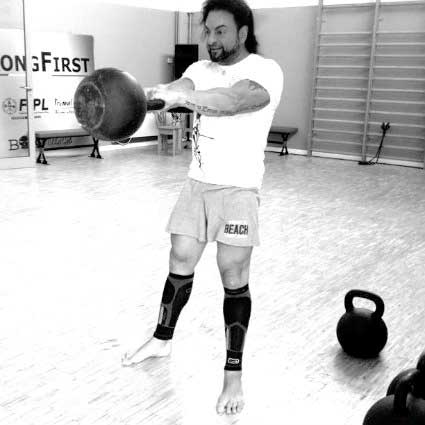
Program Minimum—Part B: Get-up
GET-UP GENUS
- Arm-Bar
- Floor Press
- Naked Get-ups
- Partial Get-ups (to a tall sit)
- Tactical Lunge
- Full Get-up
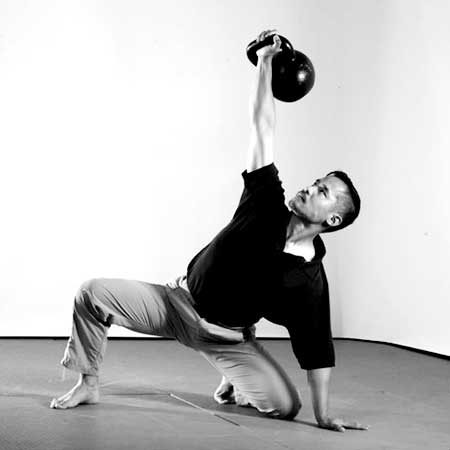
Retro Program Minimum—Part A: Bent Press
BENT PRESS GENUS
- Bent Arm Bar
- Half Kneeling Bent Press
- Low Windmill
- High Windmill (kettlebell in top hand)
- Bent Press
- Two Hands Anyhow
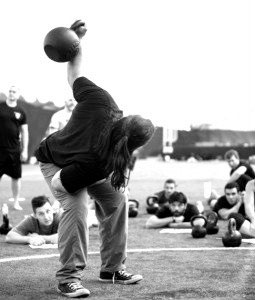
Certified Master Instructor
Retro Program Minimum—Part B: Snatch
SNATCH GENUS
- One-Hand Swing
- High Pull
- Dead Stop or Power Snatches (touch and go)
- Tempo Snatches (vary time in lockout)
- Heavy Snatches (2-3 reps with a 5RM size kettlebell)
- Double Snatches
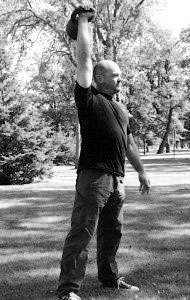
This is my list. You may have others or you may think that a three is harder than a four, but that is not the point. The take-home lesson here is a list of six drills for each movement in the order from easiest to most challenging, and there is some room for interpretation.
One more point: If you are reading this and do not know how to do any of the above drills, you are required to find an SFG Certified Instructor in your area and get some lessons!
The Plan: Mixology for PM2
The plan calls for training four days a week.
Monday: PM
- Pick 2 drills from the Get-up Genus and 2 drills from the Swing Genus. Alternate between grinds and ballistics.
- Beginners should feast on a steady diet of 1s and 2s.
- Intermediate Students should focus on 3s and 4s as well revisiting 1s and 2s.
- Advanced Students can play with 5s and 6s.
Tuesday: Retro PM
- Pick 2 drills from the Bent Press Genus and 2 Drills from the Snatch Genus.
- Beginners focus on 1s and 2s.
- Intermediate 3s and 4s.
- Advanced 5s and 6s.
Wednesday: Off
Thursday: Repeat Monday
Friday: Repeat Tuesday
Note to Instructors: When your new student has a good grasp on the 1s and 2s, then slowly introduce the higher level drills. They will have already seen your advanced members practicing them. So you will have some built-in retention.
To quote a student of Cole Summers StrongFirst Certified Senior Instructor and Former Team Canada Strength Coach: “Coach, when I master a new move it changes me completely.”
Timing
How much time or how many reps should you put in to each drill? You can play this by feel, but remember to vary the load from training session to training session. Or if you have a strong foundation and have learned all the drills in your list. then try what I outline below. It will add some randomness to your training and also a bit of fun.
I borrowed the following idea from an article Pavel wrote sometime back called ETK PLUS:
Get a pair of dice. Roll one die, this will determine your first drill.
Example: If you roll a 4 on swing day, look at the swing list and find #4, you will be doing one-handed swings.
Next roll both dice. This will give you the practice time.
Example: roll an 8 and you are working for 8 minutes on one-handed swings, shoot for about 80% effort.
Roll a die again and get a 6 and you will be working on get-ups.
Roll two dice and get a 4 and you will be practicing for 4 minutes.
Repeat the rolls again for your second swing selection and second get-up selection.
We have had great success with this simple program and I am sure you will as well.
Program Minimum2—Double the fun, double the results!
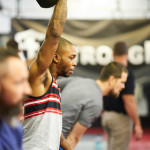
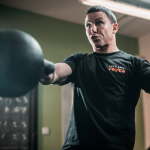
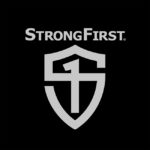


Thank you for your time and effort Jon! Looks to be a great program at any level.
Cheers
S
Thank you for this program Mr. Engum! I’m two days in and I’m here to tell anyone reading this, that it’s deceptively challenging, especially if you’ve neglected your snatch and bent press for a while. I’m using the dice roll for my session to session planning. I love that by following this, I’m doing a lot of foundational stuff that I blatantly neglect. I’m sore in weird places.
Great article, Jon!
I will definitely use it with my students!
Thank you!!
Troy, just go back to WalMart.
Steve/Mark,
Thank you for your replies! I am familiar with John Wooden’s successful playing days, but wanted to point out that when he was coaching UCLA and setting records that will never be broken, he was passed his days of doing so on the floor and led from a different position.
Strength to each of you,
Shawn
Shawn,
Actually Coach Wooden did fair well as a competitor. I see your point and you are absolutely right. Troy is simply a “critic” that Theodore Roosevelt refers to in this speech, “The man in the arena.” Apparently Troy would rather throw stones… Poor, yes, but this happens.
Hey Shawn,
I get your point and agree with it. However, John Wooden might not be the best example. Did you know that John Wooden was a great player, not just a great coach?
He was a three time all-state high school player in Indiana, and led his team to three straight state title games, winning the state championship his senior year. In college, he was an All-American for three straight years at Purdue, and was college basketball player of the year in 1932. As a pro he was first team All-NBL for the 1937-38 season (this was before the NBA was in existence).
Wooden was inducted into the Basketball Hall of Fame as a player in 1961 and again as a coach in 1973. I think being in the Hall of Fame qualifies as “faring well” as a competitor in the sport he coached.
Let’s see how long it takes until they delete your post.
In the world of fitness, everyone knows the name Pavel. Who’s ever heard of Troy?
Since Pavel started Strong First then I think promotion of his/Strong First products would be expected. I do not expect Wal Mart to promote J C Penny products. There are a number of other sites that do not have direct affiliations and write about methods and products from different sources. In regards to any of Pavels performance standards I don’t know if it really matters. There seem to be many successful coaches in a number of areas of athletics that did not excel at the sport they coach; however I do not think this is the case with Pavel.
Ochen ne kulturny komrad.
Awesome article! I will share it with the StrongFirst community here in Korea!
Well, this article makes this weekend’s SFG 2 with Jon Engum in Vancouver, BC even more exciting! Great timing!
Great one, Jon!
That is an awesome article sir, love it, thank you!